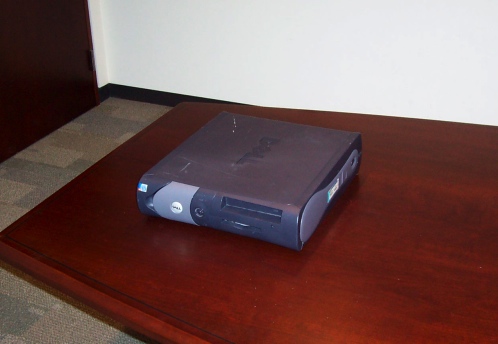
This is a CDF lab computer:

Well, most of it. Not included is the keyboard, mouse, and monitor. They plug in to some of these places on the back:
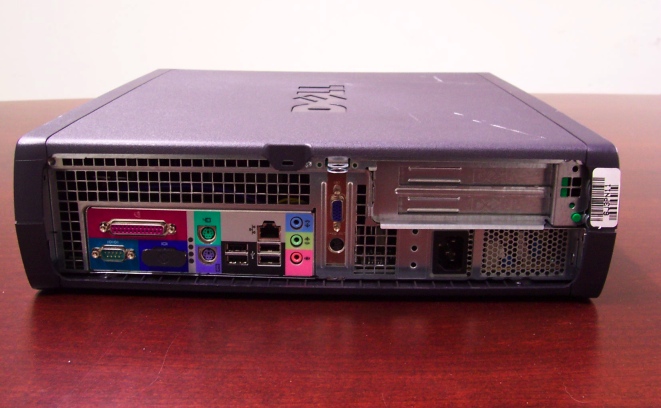
Everything else is inside. Let's open it up.
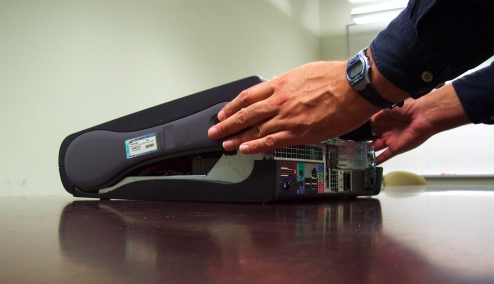
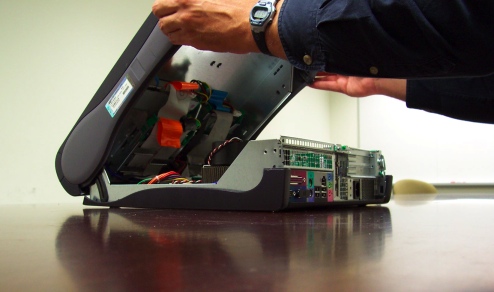

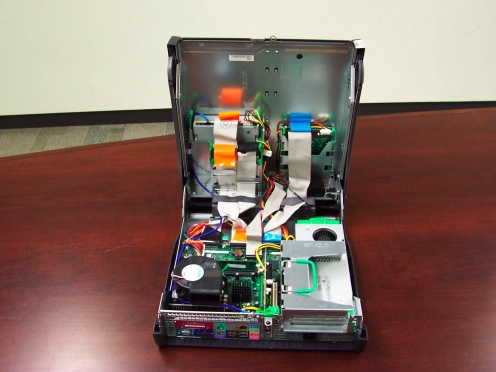
It's colourful! Lots of wires and things running around.
Let's look at some of the components inside.
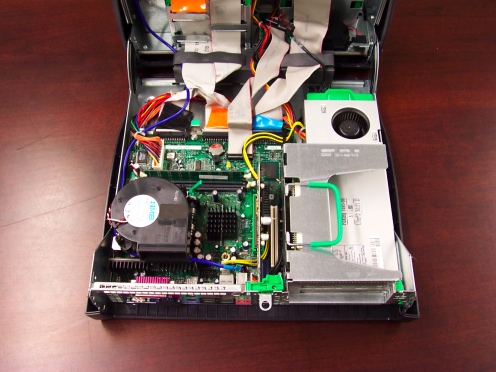

In this kind of case, the disks and stuff are attached to the cover.
Cables from the "motherboard" go to the "peripherals".
These wires are power; this cable is data.
Let's unplug some of them so we can look at some of the disks.
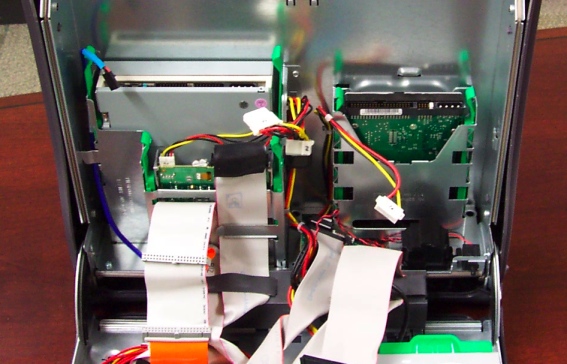
This is the CD drive:

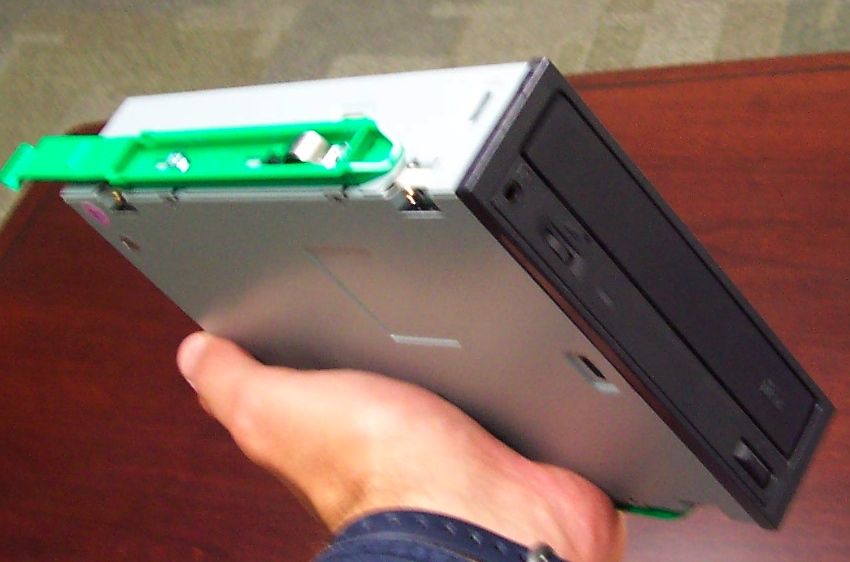
Note how it was facing towards the front of the case for you to put in a CD. As you know, audio CDs (e.g. music CDs) are digital; the sound data is stored there in terms of numbers. We can store non-audio data on CDs too, and it's commonly used to store computer software, and other kinds of data, especially for mass publishing purposes.
Here's the "hard disk", which stores most of your files, and most of the programs you run.
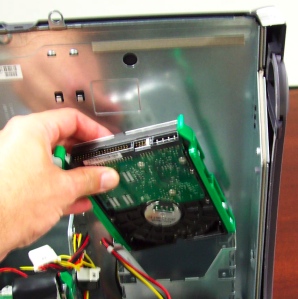
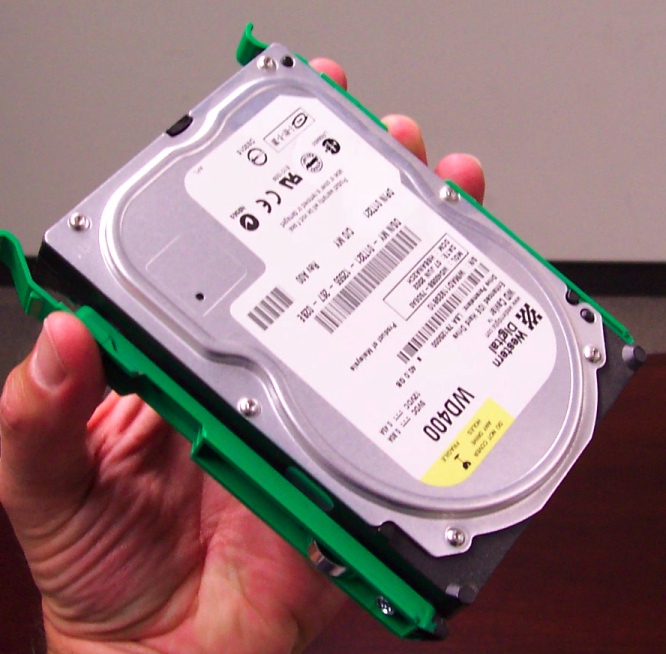
The disk drive is the machinery which accesses the disk surface. Here's some of its electronics:
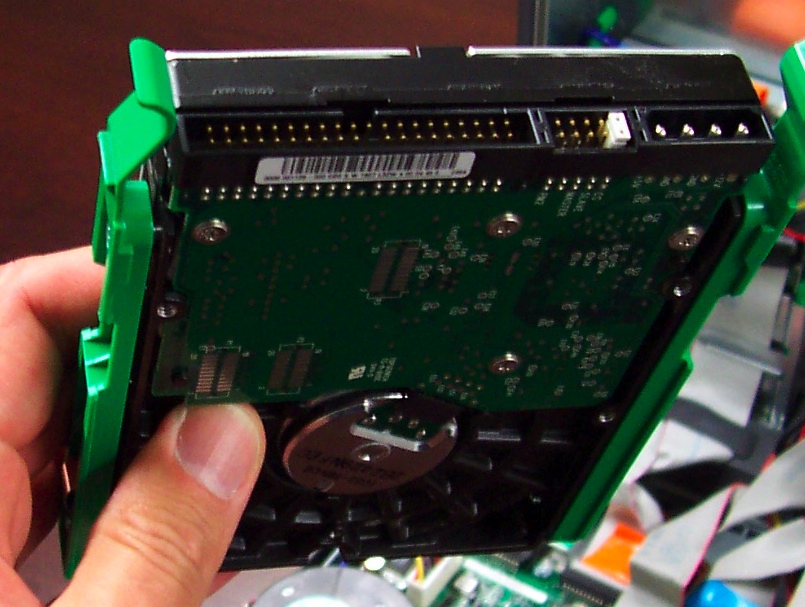
Here's the insides of the device, from http://computer.howstuffworks.com/hard-disk.htm:

Shiny platters! (That's not me reflected in them!)
This is the recording surface. It's steel; the disk drive magnetize and demagnetize tiny areas of the surface to be a 1 or 0.
In order to store more data, a disk actually has multiple platters.

As opposed to a "floppy disk", which stores a lot less, and has flexible platters made of soft plastic instead of steel.
Let's take out the floppy disk drive:
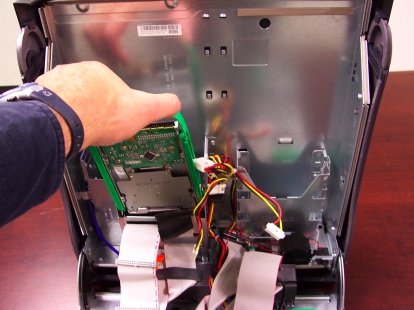
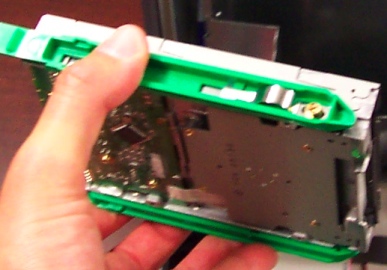
Here's where the floppy disk is inserted:
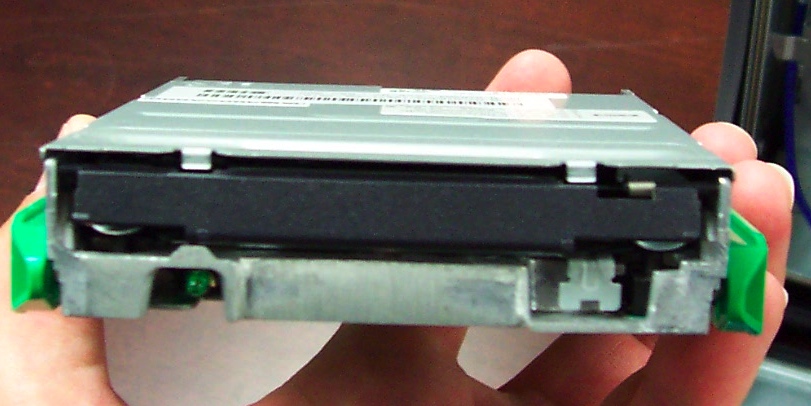
Unlike the hard disk/drive, floppy disks are "removable" -- the disk and drive mechanisms are separate. So you can have any number of recording surfaces (floppy disks) to use with the same electronics (the floppy disk drive).
Whereas with hard disks, the hard disk and the hard disk drive are a unit.
A floppy disk looks like this:
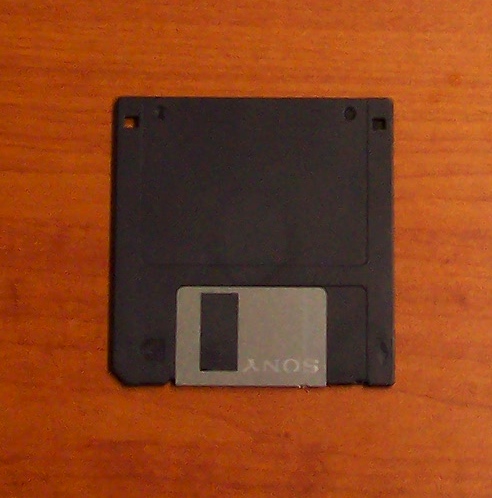
Here is the back:
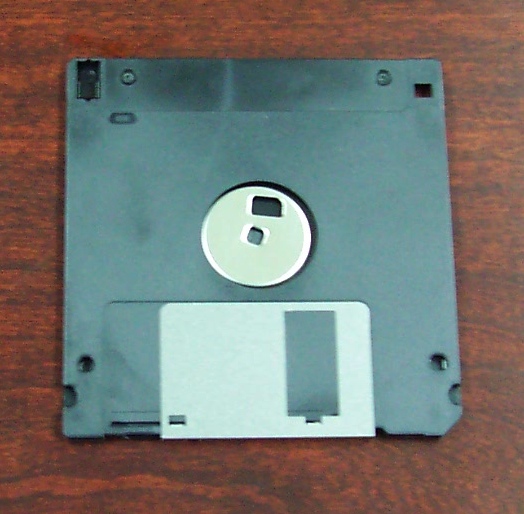
Here you can see where the floppy drive grips the floppy disk surface (which is inside this case -- we'll open it up in a minute). It needs a tight grip to spin the recording surface with as little wobble as possible, so that the data can be written in more precise positions. Still, it's not nearly as precise a motion as with a hard disk, and this is one of the several reasons that floppy disks store less data than hard disks -- you need to be able to read the data back from the same position you wrote it at, so if the disk can wobble more, you need to write a larger blotch so that it's there when you look for it.
The floppy disk hard-plastic case is protection for when you put the disk in your bag, pocket, etc. This is an issue we avoid with hard disks because they're not removeable.
The floppy disk drive needs to open the case:

Then the read-write arm can get access to the recording surface. A little hook grabs a hole in the cover down here and slides it over.

The recording surface inside looks like this:
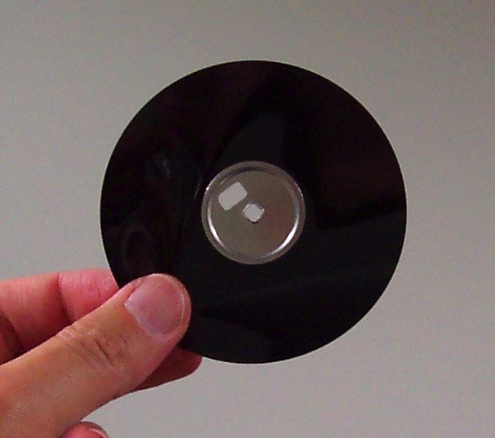
So you see why it's "floppy". Mostly, it's much lighter. Also cheaper to mass-produce; I don't mind destroying one for a demo, or taking it to someone's house and just putting one little file on it.
See how that bit which the drive grips to spin it is attached to the media. There's a big hole in the back of the harder plastic case which we saw it peeking through before.
It's a little shiny. Not as much as the metal in the hard disk platters, but similarly we don't want any roughness or other material in the way of reading the surface -- we want it to be uniform.
Let's look back inside the computer case again.

This is the "motherboard", with various things plugged in to it. The "motherboard" connects everything together, electrically and physically.
Often one wants to add additional "RAM" to a computer. There may be some RAM wired in on the motherboard, and then you can add more in these slots. This computer has one memory board in it:
Let's take it out to look at it:
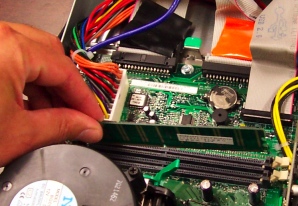
Here it is:
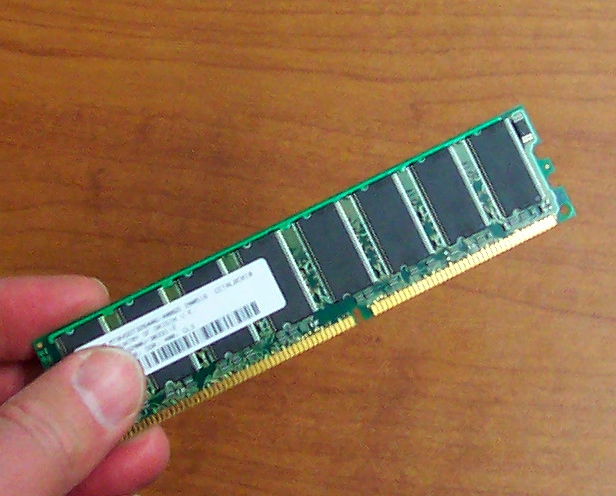
Another thing one wants to fiddle with sometimes is the "graphics card" -- the circuitry which controls the display on the computer monitor (screen). You can spend more or less money on a graphics card. In the older days, a better graphics card would get you more colours or better resolution (more dots). These days, the main differences are about processing power available on the card for doing various things, so programs can provide fancier displays, more animation, that sort of thing.
This latch allows the removal of the graphics card:
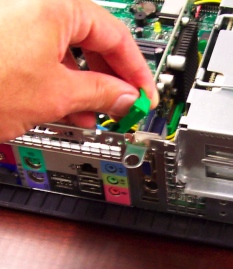
I'm pulling it out here:
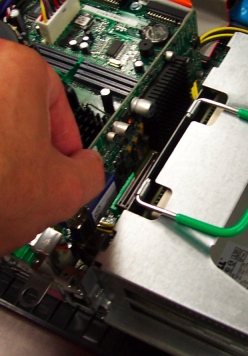
And this is what the card looks like:
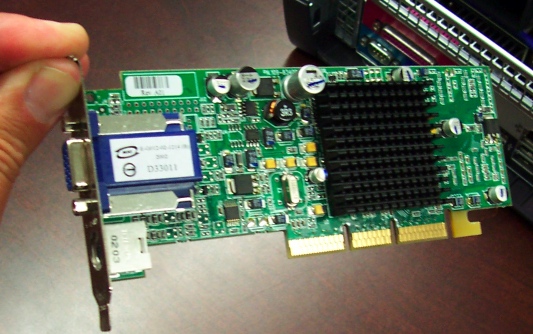
From our point of view, this is just a bunch of circuitry. It connects to the monitor. Note the connector on the left-hand side which the monitor plugs into on the back of the computer.
This is the "slot" which the graphics card went in to:
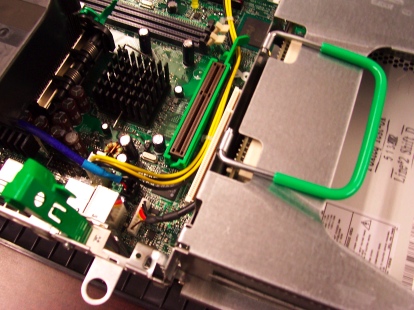
If you hear the old term "expandability", that's what this is talking about. You can add cards to do various things that other people devise. Especially for controlling "peripheral devices" -- input and output devices like a keyboard or mouse, or printers, or modems -- so these are often called "peripheral cards".
So that's our tour of the inside of the computer.
Let's look at one other hardware item in a similar way: The mouse.
There are basically two types of mice. The simpler kind looks like this on
the bottom:
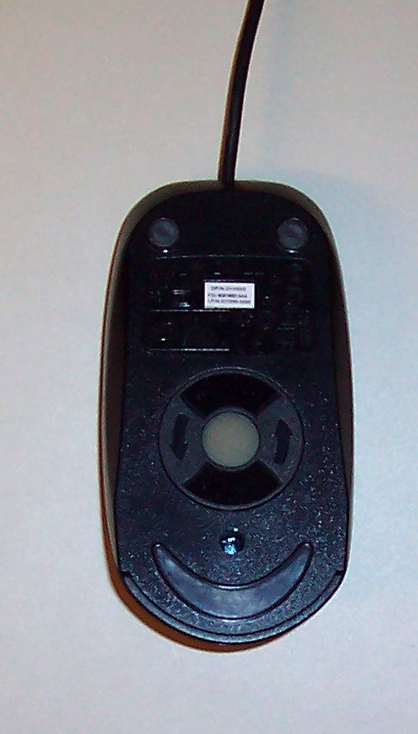
The ball presses against the desk, and when you move the mouse one way, it rolls the other way.
Let's take out the ball:
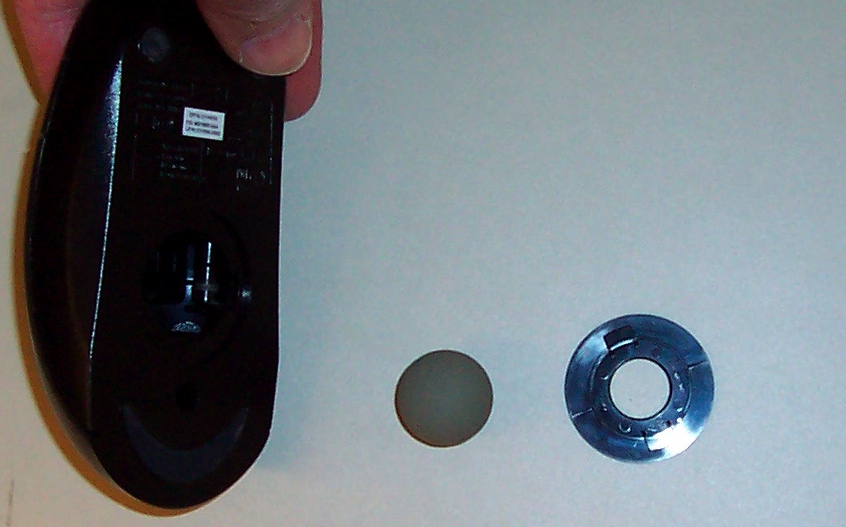
Here's what's under the ball:
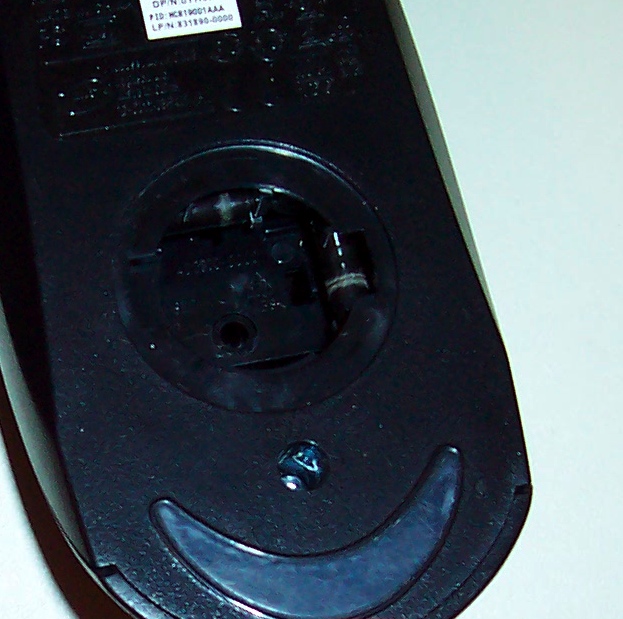
One sensor tracks the ball's motion in the horizontal direction, the other in the vertical direction. If you move the mouse on a diagonal, the computer gets data from both sensors and can put it together to figure out how far the mouse has moved and in what direction.
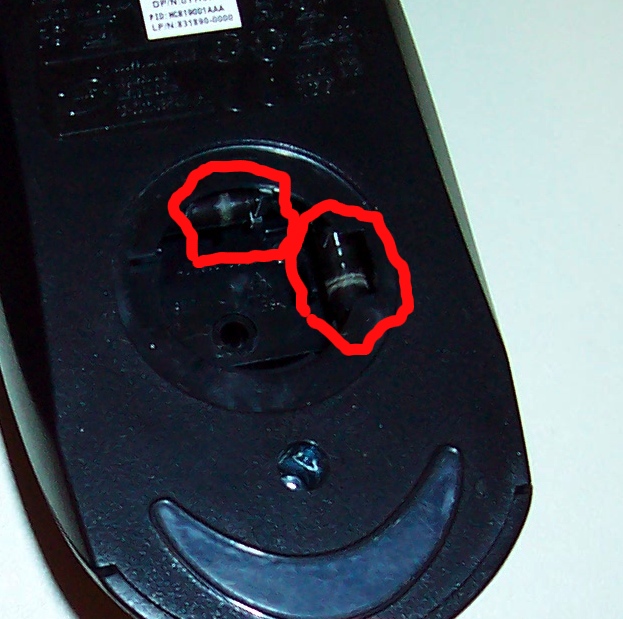
The mechanical mouse tends to get dirt in it over time, and track less smoothly. Also, there can be wear on the moving components.
An optical mouse is superior in both of these respects. Until recently, optical mice were very expensive; but in the last several years they've become commonplace.
The bottom of an optical mouse looks like this:
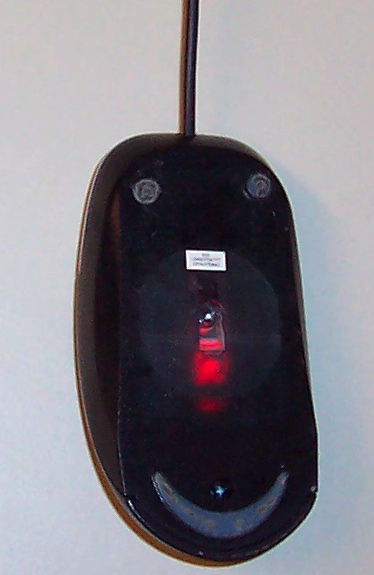
A laser light shines on the desk surface, and its reflection is analyzed for motion.
So the inside is just electronics.
If you move an optical mouse over a completely uniform surface, the electronics can't detect the motion and the cursor on the screen won't move. Early optical mice required you to use a special mouse pad which had a pattern on it which the electronics could detect. Modern optical mice are very good at detecting motion from even the smallest irregularities in the surface, so very few surfaces are problematic for modern optical mice.